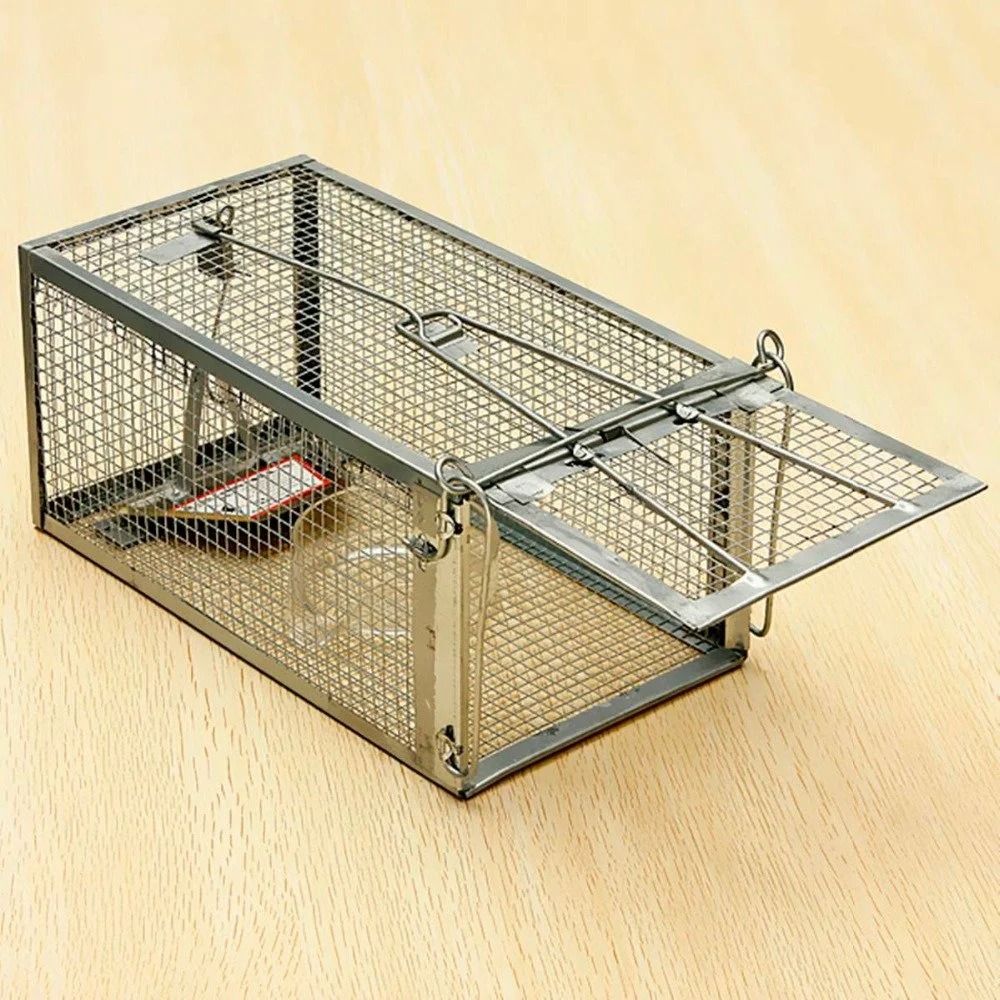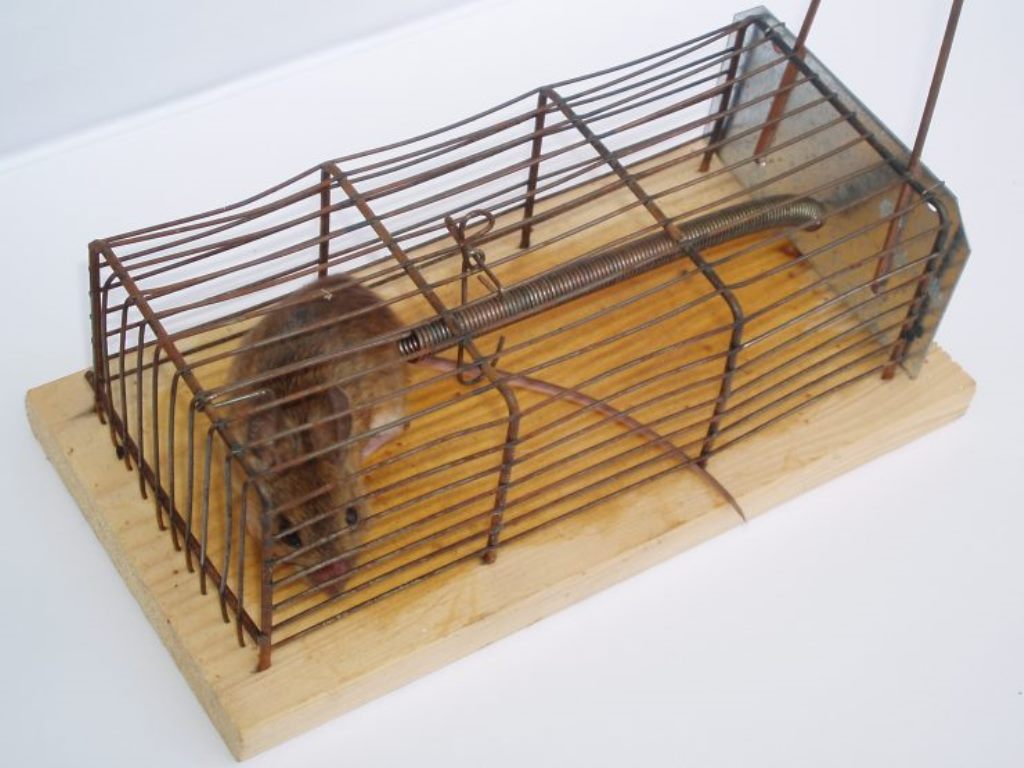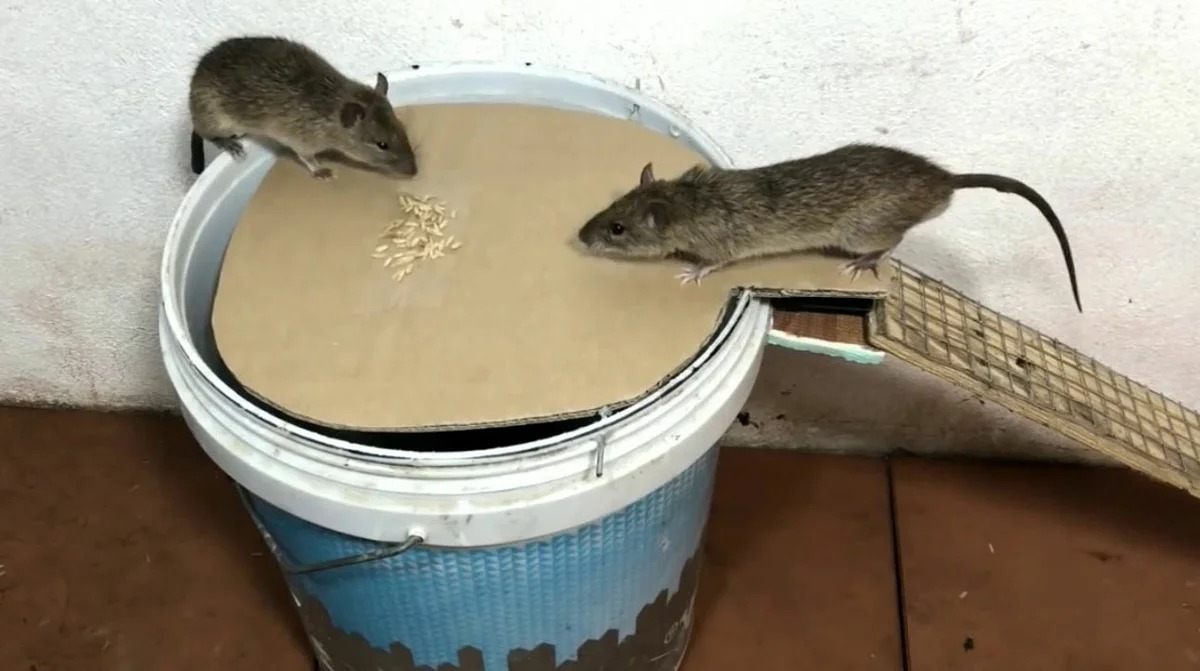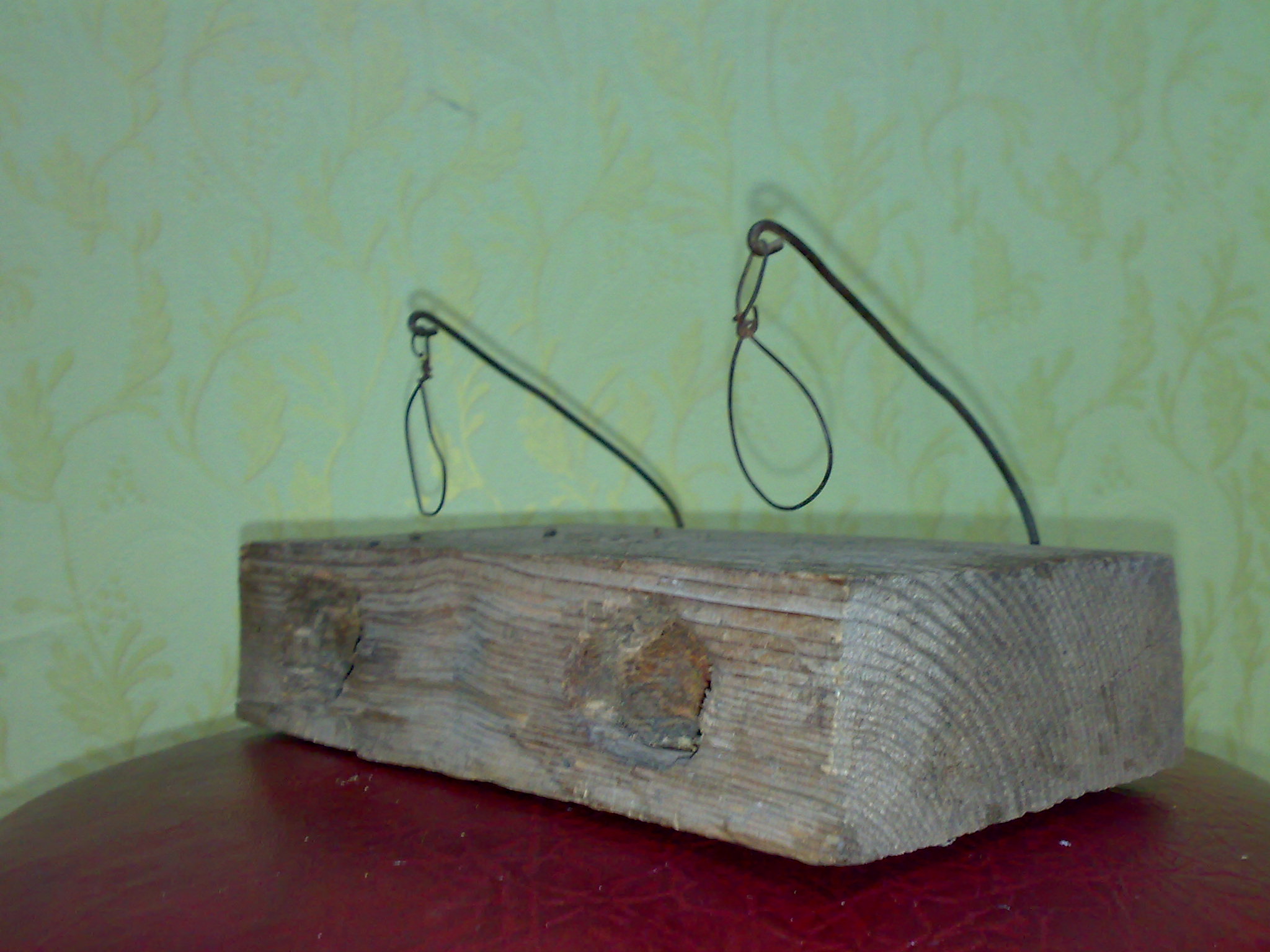DIY rat trap
People and rodents are fighting throughout the entire period of their conscious existence. Back in the Middle Ages, the rat became a carrier of many diseases, the terrible "Black Death" - the plague, which claimed the lives of a third of the population of Europe. Today there are many all kinds of poisons, but not all owners are ready to use them, many stop at creating a rat trap with their own hands - this is not as dangerous for pets as chemical agents.

Why rats get turned on
The relationship between rodents and humans has never developed, pests spoil food, gnaw on clothes and walls in the house, and most importantly, like many centuries ago, they become carriers of diseases. The following factors can become the conditions for the appearance of rats and mice in a dwelling:
- enough food;
- normal room temperature (heated object);
- location near a landfill or trash can;
- lower floors of high-rise buildings - uninvited guests come from basements;
- unsanitary conditions in a certain apartment can become a nursery, a place for the distribution of tailed beasts throughout the house;
- the presence in country houses, sheds where domestic animals live - rats find a constant source of food, steal food from pets.

It is not always possible to immediately understand that "gray" robbers have settled in a dwelling. Rats are a cautious creature, of course, if their colony increases, then they will be noticeable visually. You need to pay attention to the following aspects:
- specific smell in small rooms;
- fumbling under the floor, behind walls, or beeping;
- rodent droppings in different rooms and under furniture;
- spoiled food;
- burrows and gnawed walls, wooden products;
- "Sharpened" paper.

Important to remember. Rats carry the following diseases: tetanus, leptospirosis, typhoid, etc. They are dangerous both for country houses and city apartments. Trapping pests is the key to the health of your family!
How to make a rat trap with your own hands
DIY rat traps are by far the most effective way to catch annoying rodents. The main thing to look out for is that the trap should be fairly strong and medium in size. It is necessary to take into account the fact that the tailed ones can gnaw even some types of concrete. In addition, the animal "cornered" becomes as aggressive as possible. A small creature is able to withstand a huge (for these individuals) person. This means that the rat trap must be: reliable, and also a hostile creature must not, in any case, injure a person.

A homemade device is sometimes more effective against rodents than purchased models. You can put your creative ideas into the mechanism, in addition, rats are curious and they are attracted by incomprehensible designs.
In order to make a trap with your own hands, you do not need to create "high-tech" units, clear and simple designs that do not require specific materials are the most effective. And if a novice engineer-master shows a little ingenuity, you can create a formidable "destruction machine".

Note. If you hope that when several individuals appear, you should not take drastic measures, you are deeply mistaken. One pest is capable of hatching about twenty cubs per month. Therefore, only total destruction is the correct way out of the situation.
Overturning
This method is for catching "tailed robbers", which means that the animal will come up to the bait and fall into deep space.

- One of the popular options for creating a "tunnel":
- we make an imitation of a tunnel from a plastic pipe or cardboard;
- we fix the tunnel structure at the edge of the table (tape, glue, etc.), the upper part of the device should hang over the “abyss”, and the bottom should be cut off;
- at the very edge, inside the pipe, there should be a "treat";
- where the table ends, you need to put a deep container with water;
- the rat runs down the aisle to the bait and falls down.
- You can also catch annoying animals in another overturning way, put a falling bridge with bait on the edge of the barrel, and bring a ladder (board) to it.

Additional Information. Any container: bucket, barrel, can - must be filled with water, so the rodent cannot get out.
From plastic bottles
In order to make a trap from a plastic bottle, you do not need many different materials - one of the simplest methods that are used in practice. There are a huge number of types of these devices, but their main principle of operation is based on the functional use of the bottle.

Let's dwell on the most effective traps:
- The "slamming trap" is a classic type:
- a plastic container is cut (a stylized door is created);
- the cut part is pierced with a straight pin or a wooden stick - this is a harness mount (rubber spring);
- a similar pin pierces the inside of the container - also a kind of fastening;
- two rods are connected with an elastic band or a tourniquet;
- the descent mechanism is attached to the bottom, the bait is suspended on it, the pest pulls the bait, the mechanism is triggered, the rat is caught!
- "Spinning trap" - we make from an ordinary plastic bottle:
- the container is "pushed" onto a spoke or a pin (the main thing is that the device rotates freely);
- an already finished mechanism is greased with sour cream;
- the entire apparatus is attached to the barrel (large bucket);
- a ladder (board) is required to the barrel;
- the animal jumps on the bottle, it turns and the gluttonous creature flies into the abyss.

Covering live trap
This rodent control technique has been known since time immemorial.
- The simplest device is a jar (saucepan) and a coin. Food is scattered near the trap, the bank is placed on the "coin", the rat will certainly touch the coin when it runs near the trap.The main thing is that at the moment when the stylized trigger mechanism is touched, the animal is inside the device.
- More modern option:
- we find a suitable container (bucket, saucepan, etc.);
- we install a rod inside the container, and attach a thread with bait to it;
- the thread should also be fixed on the coin (sometimes a cardboard corner is used, and the bait is put on it;
- the mammal pulls the thread, the stand falls, the "glutton" is caught!

Cage traps
Homemade products of this type have proven themselves very well in pest control. For some people, such a design can be a difficult option, iron materials and a blueprint for the mechanism are required. Of course, if you want, you can master this method too - this is not a "high-precision converter project", but an iron rat trap.
- a sufficiently strong steel cage is required;
- on the one hand, a door is attached to the cage, which is lowered by means of a spring;
- at the end of the fence, food is attached to a triggered mechanism;
- the tailed one grabs the treat, the device works, the doors close!

Tunnel trap
This design is very often used to exterminate not only rats, but also mice, moles in summer cottages, it does not look like a tunnel-type rat trap that overturns, a completely different principle of operation:
- you need a part of a pipe (plastic) or another product soldered at one end;
- needles are attached at the end, which are directed inward;
- the bait is placed inside the trap;
- the individual enters inside without hindrance, cannot get out, the needles kill the animal, or it will remain inside the trap.

Cylinder traps work in the same way, but without needles. The animal climbed inside, it cannot get out because of the even walls.
Silky
In truth, this method of catching rodents is quite troublesome. The reason is the small size of the animal. But, if you get used to it, you can successfully complete your hunt. Here's everything you need to do to create such a trap yourself:
- nylon cord;
- a piece of fishing line;
- insulating tape;
- sinker;
- stationery rivets;
- nuts, bread for bait.

For this unit to work successfully, you need to clearly select the weight in mass equivalent. If it is too light, then the tourniquet simply will not tighten with the required jerk. And the object of the catch will escape.
Getting started:
- a loop must be made from the cord;
- an imitation of a stranglehold must be attached to any wooden surface;
- it is necessary to attach the bait to the same surface, the path of the animal must clearly pass through the stranglehold (it must also be borne in mind that the rat must remain in the middle of the loop while capturing the bait);
- we fix the fishing line on the "treat", we stretch one end to the stranglehold;
- we hang a sinker in the center on the line;
- the annoying rodent grabs the bait, the sinker pulls down, the stranglehold is tightened.

Note. This technique is universal, suitable for individuals of different ages.
Zürner's trap
This technique is very similar to the classic overturning traps, but with its own characteristics.
- visually, the trap resembles a wooden toy house;
- there are two entrances;
- a narrow corridor, where a baile is located at the central point of the canopy;
- the floor is hinged on both sides;
- a small creature wants to feast on a delicacy, and instead falls into the "basement" of the house, and the floor boards return to their original position.

It is unlikely to purchase a unit in a store, all the elements need to be done by yourself. Due to the hassle of the project itself, in practice, such a trap is used little.
Additional Information. Such a device gives a chance to catch several rats.
Glue traps
There are many rat traps of this type on sale, but it is not always possible to purchase a device. For example, in the country, in small shops, these products are often not available. This trap is easy to make yourself. It is necessary to buy a specialized glue that lures animals with its smell. We take a sheet of cardboard and spread it with glue, put complementary foods in the middle. The floundering creature, attracted by a peculiar scent, will stick to the surface completely.

Important! There are significant disadvantages of such devices: the animal, as a rule, does not die immediately, but gets nervous and yells, which is very unpleasant for susceptible individuals. Even a cat or a dog can fall into a trap, then it takes a very long time to pull them out of an uncomfortable situation.
Electric rat trap
Models of electrical devices are quite popular today. They are not as difficult to make as they seem:
- you need plywood on which holes are made for wires;
- cut out several rectangles from aluminum cans, make holes in them;
- we stretch the wires in the slots (we make different polarities in the wiring);
- you need a conclusion of two common wires on the structure (plus and minus);
- we attach rectangles on plywood (with glue), in one row, at a short distance (we connect a phase to one plate, and the second - zero);
- you will need an electronic unit that can be borrowed from an insect racket; we place it on plywood, close the electrodes in order to remove the existing charge;
- add a capacitor;
- cut off the bottom of the plastic bottle, set it in the form of a house on top of aluminum rectangles;
- food is poured into the house;
- we turn on the trap in the network, the animal shocks when it touches both plates.

Wire choke
The trap of such a device can exactly repeat the structure of the snare. Just use steel wire instead of a cord. You can also make an imitation of a hunting snare, fix a steel noose on the surface near the bait, so that the deadly loop is tightened on the animal's body, which was reaching for the bait.

In order to fix the animal in the hole, a wooden bar is made with several "holes" and spring mechanisms.
Plastic trapping pit
To arrange such a trap, it is enough to have a capacity (from five liters), you can use a bottle:
- on an open space, lay a Whatman paper cut in the middle by a tape method or an ordinary sheet of paper (with a cross-shaped size);
- paper is fixed with tape;
- the bait is suspended over the container;
- they make a bridge from the board upstairs;
- the animal jumps on paper, trying to reach for the treat and falls into the "abyss"!

Tin can trap
Very similar to the Spinning Bottle design, only here we use a beer can. The mechanism turns and the rodent is in the bucket!
Versha
For catching rats, they use poles, according to the principle of fishing tackle. A cage with a cone-shaped entrance: the animal runs inside, but cannot go back - the second entrance is a dead end. It is also impossible to return, the door is fixed in only one direction. The general meaning is that there is an entrance, but no exit!

How to catch a rat at home? To date, there are plenty of options: you can get a cat, use chemistry, but it's better to make a rat trap yourself!
How to install correctly
Most successful rat-catchers say that traps should be set up in the animals' habitats. It is possible not to set a trap right away, but to lull the vigilance of a cautious animal by placing bait on an unidentified trap. A constant diet will make the rat less cautious and the success of the enterprise is guaranteed.

After use, the trap must be cleared of the smell of a dead creature, so as not to scare off new "candidates for capture." The trap must be set against the movement of the "tailed".
Additional Information. The rodent does not like illuminated areas, moves near walls, and not in open areas - this must be taken into account when installing catching devices.
Best rat trap bait
The diet of rats is varied, you can load the traps with the following baits:
- cheese;
- grain crops;
- bakery;
- cottage cheese;
- sausage;
- smoked meats;
- sour cream;
- nuts;
- sunflower oil and seeds;
- Salo;
- even beer, etc.

The best commercial rat traps
The following purchased traps can be distinguished:
- Crusher traps.
- Tunnel traps.
- Electrical devices.
- Net traps.
- Ultrasonic scarers, etc.

What to do with a rat trap and a trapped rat
Of course, a person is no longer a medieval barbarian, but with regard to a caught rat, there is only one solution - liquidation. This can be done as follows:
- add water to the container so that the animal drowns;
- a precise blow to the head, something like a bat;
- shoot the pest if there is a suitable weapon;
- if it is possible to transfer the animal to an airtight container, you can send the "criminal" to the gas chamber. Stir baking soda and vinegar in a cup, pour into a container, the animal will suffocate (this is considered a humane method of reprisal).
The described methods seem terrible, but a person cannot, like the Pied Piper of Hamelin, control animals with a pipe, so there are simple methods of elimination.

Prevention of the appearance of rats in the house
For preventive actions to prevent the appearance of rodents in your home, you need to follow the following recommendations:
- close up openings and cracks in the house;
- get a cat;
- throw away garbage in time;
- clean up the apartment;
- food waste cannot be poured into the toilet;
- find a separate place for food, cereals, where there is no access to pests.

Homemade products for fighting rats have proven to be excellent. They are effective even when compared to some factory products. If "uninvited guests" appeared in the house, there is a way out - the complete extermination of the entire colony with the help of simple devices made by hand!
How to make a rat trap from a plastic bottle





